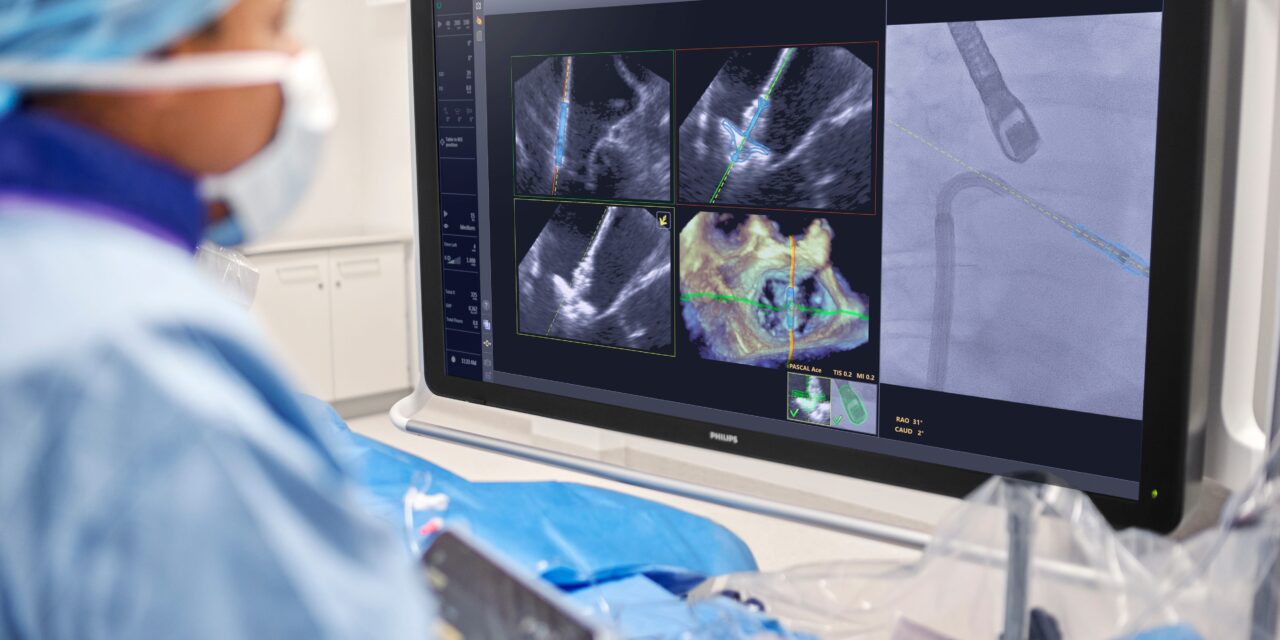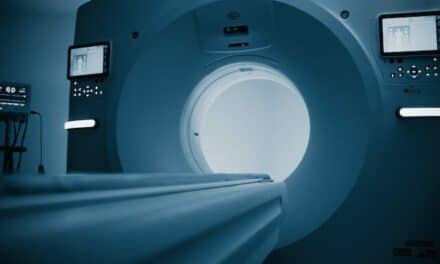The tool automatically tracks transcatheter repair devices and merges echo and X-ray for clearer intra-procedural guidance.
Royal Philips has introduced DeviceGuide, an artificial intelligence (AI)-powered device tracking solution that assists physicians during one of interventional cardiology’s most technically demanding procedures: repairing leaking heart valves through a minimally invasive approach.
Built on Philips’ EchoNavigator platform, this software brings AI into the procedure room, translating imaging into real-time visual guidance to help clinicians navigate the beating heart with greater clarity and confidence. It will be previewed at London Valves 2025 (Nov 16-18).
“This is Philips’ first AI assisting physicians in real time to visualize and guide heart valve treatment devices as they navigate the beating heart. It’s helping doctors in the moment as they are helping their patients with structural heart disease,” says Dr Atul Gupta, chief medical officer, diagnosis and treatment at Philips, in a release.
Minimally Invasive Treatment of the Mitral Valve
A leaking heart valve, known as mitral valve regurgitation, is a condition in which blood leaks backward through the heart’s mitral valve. It affects more than 35 million adults worldwide, leaving many short of breath, fatigued, and struggling with everyday activities like climbing stairs or walking short distances. If left untreated, severe cases can lead to heart failure and other serious complications.
For patients who are too frail for open-heart surgery, minimally invasive transcatheter repair techniques such as mitral transcatheter edge-to-edge repair offer a vital treatment option. During these procedures, physicians repair a leaking valve through a tiny incision in the top of the leg in the groin area, guiding long, flexible instruments through the blood veins and navigating a miniature repair device into the beating heart.
Clinicians must view and interpret both X-ray and ultrasound images on multiple screens, coordinate movements between two operators, and make precise adjustments to grasp the moving valve leaflets, position the repair device, and confirm the result in real time. The process demands accuracy, coordination, and experience from the team. Philips says this is where DeviceGuide can help with its 3D navigation support.
How AI is helping
DeviceGuide uses an AI algorithm to automatically track the tiny repair device as it moves through the beating heart, combining live echo and X-ray images. It creates a virtual 3D model of the treatment device in real time, superimposed on the live images of the beating heart. This allows clinicians to see where the device is and in which direction it is pointing, providing a clear view of the procedure and potentially enabling them to navigate the device more easily to effectively seal the leak.
“By embedding AI into the procedure, DeviceGuide gives physicians an extra pair of eyes, effectively bionic vision, helping them treat more patients safely and confidently,” says Guptain ina release.
Collaboration with Edwards Lifesciences
This innovation was developed in collaboration with Edwards Lifesciences, the manufacturer of these repair devices. The solution combines Philips’ expertise in medical imaging and AI technologies with Edwards’ leadership in structural heart innovation. Together, the companies have reimagined key parts of the mitral transcatheter edge-to-edge repair procedural workflow.
“DeviceGuide demonstrates the impact of combining leading imaging and therapy expertise to develop solutions designed around the procedural workflow, a model that will shape the future of AI-enabled image-guided structural interventions,” says Mark Stoffels, business leader, image-guided therapy systems, in a release.
Photo caption: DeviceGuide in use with EchoNavigation.
Photo credit: Royal Philips





